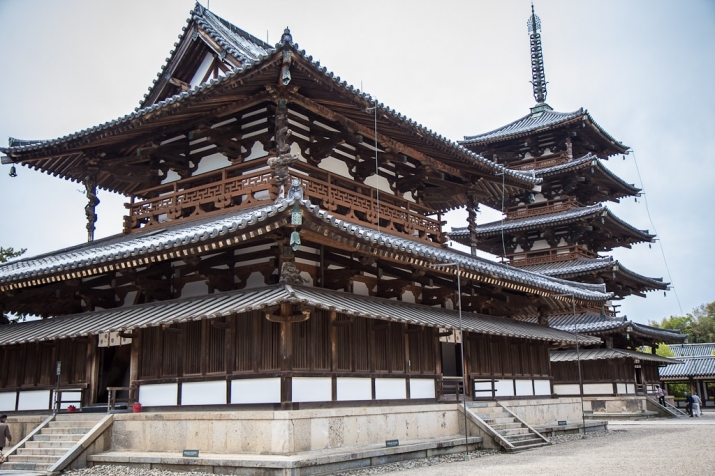NEWS
Proposal to Remove Swastikas from Foreign-language Maps Sparks Debate in Japan
 Horyuji Temple, Japan. From timetravelturtle.com
Horyuji Temple, Japan. From timetravelturtle.comJapanese tourism authorities are considering removing the swastika, a Hindu and Buddhist sacred symbol, from foreign-language maps for tourists and replacing it with a three-story pagoda. The swastika is currently used on such maps to denote a Buddhist temple. The objective of the change is to make the maps more “foreigner-friendly,” as many associate the swastika with Nazi Germany.
Originally an Indian symbol of auspiciousness, the swastika has been particularly well received as a Buddhist symbol in China and Japan. According to the website Chinese Buddhist Encyclopedia, the swastika as a motif dates back to the ancient Indus Valley or Harappan civilization (c. 3300–c. 1700 BCE) and was adopted as a symbol with multiple meanings, such as eternity, cosmic harmony, and prosperity. It appeared in China as early as the Liao dynasty (907–1125). According to the site Religion Facts, “the swastika signifies auspiciousness and good fortune as well as the Buddha’s footprints and the Buddha’s heart. The swastika is said to contain the whole mind of the Buddha and can often be found imprinted on the chest, feet or palms of Buddha images. It is also the first of the 65 auspicious symbols on the footprint of the Buddha.”
The Japanese government’s proposal was drawn up in the context of preparations for the upcoming Tokyo Olympic and Paralympic Games in 2020. The Yormiuri Shimbun and Rocket News 24 report that the proposal came about after the Geospatial Information Authority (GSI) polled 1,017 people from 92 countries and regions (including foreign students and tourists and embassy officials in Tokyo’s Asakusa District, which draws many foreign visitors) about the usability and familiarity of pictograms in current maps.
According to International Business Times, among the pictograms that respondents did not recognize or like were the police station marker (which on Japanese maps is indicated only by an “X”) and the swastika.
In response, the GSI has come up with a set of 18 symbols to replace their old counterparts, the swastika among them. In its report quoted by International Business Times, the GSI argues: “Japan needs to create an environment where foreign visitors can easily get transport and accommodation. For that purpose, it is especially important to disseminate multi-lingual maps that are easy for foreigners to understand.” Professor Takashi Morita of Hosei University, who led the consultative panel, said, “We came up with designs that are readily understood not only by foreigners, but also by Japanese people.”
But the proposal has been met with a mixed response, with some believing that Japanese traditional symbols should not need adjusting due to the ignorance of foreign visitors. Makoto Watanabe, a communications expert at Hokkaido Bunkyo University, told The Telegraph: “We have been using this symbol for thousands of years before it was incorporated into the Nazi flag, so I believe it would be better for us to keep it on our maps and ask others to understand its true meaning.” He continued: “I think it would serve a good purpose if people from abroad see the symbol, ask what it means and where it originated. That might help to get rid of some of the negative impressions associated with the ‘manji’.”
According to Rocket News 24, “The GSI isn’t asking Buddhist temples in Japan to remove manji symbols from their premises, nor is it asking for changes to be made to Japanese-language maps.” However, the new pagoda symbol has its own problems. While pagodas are undoubtedly Buddhist, it could be mistaken for a Japanese-style castle like Himeji, misleading tourists to believe they are visiting a historical monument rather than a Buddhist temple.
According to The Yomiuri Shimbun, “The organization will hear public comments until February before officially deciding on the designs.”
See more
Swastika (Chinese Buddhist Encyclopedia)
Buddhist swastika (Religion Facts)
Japanese government recommends changing Buddhist temple mark on maps to avoid Nazi connotations (Rocket News 24)
Japan to remove swastikas from maps as tourists 'think they are Nazi symbols' (The Telegraph)
Japan revamps foreign-map symbols to make it easier for tourists (International Business Times)














